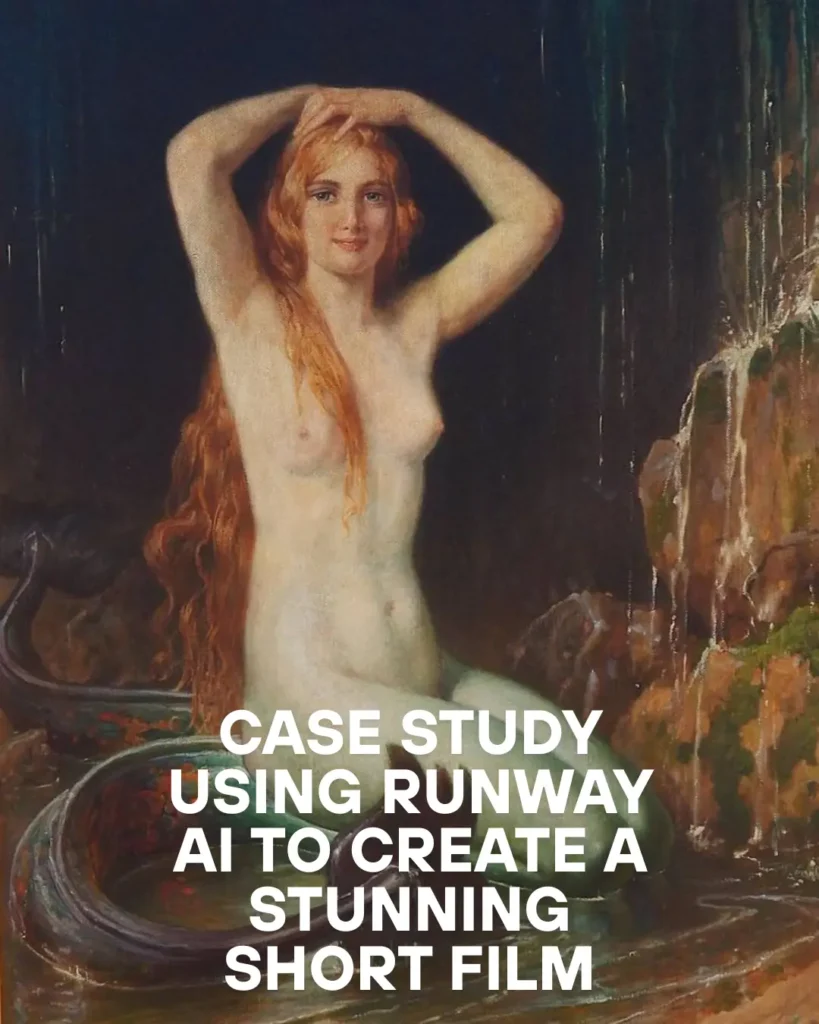Case Study: Using Runway AI to Create a Stunning Short Film
AI is changing filmmaking fast. Imagine creating a short film in days, not months. Runway AI makes this possible for creatives worldwide. This case study dives into a short film project using Runway AI. It shows how AI-generated video tools spark creativity, cut costs, and shape cinematic storytelling. Filmmakers in the USA and beyond now craft professional visuals with ease. Let’s explore how Runway AI transforms filmmaking.

What is Runway AI?
Runway AI is a game-changer. It’s a platform for video, image, and audio creation. Tools like Gen-2, Gen-3 Alpha, and Gen-4 lead the charge. Filmmakers use text-to-video, video-to-video, inpainting, and green screen features. These tools simplify complex tasks. Cristóbal Valenzuela, Runway’s CEO, calls it a “creative partner” for artists (Variety, 2023). Runway AI tackles time and budget issues. It’s cloud-based, user-friendly, and open to all skill levels.
Case Study: A Short Film Project
Meet “Starlit Dreams,” a 4-minute short film. Created for Runway’s AI Film Festival, it blends human creativity with AI power. The story follows a dreamer exploring a cosmic city. Runway AI shaped every stage: pre-production, production, and post-production. Here’s how it worked.
Pre-Production
The team started with storyboarding. Runway’s text-to-video tool turned ideas into visuals. Typing “cosmic city with glowing lights” generated vibrant scenes. These AI visuals inspired the script. The process took hours, not weeks. Traditional storyboarding can cost thousands. Runway slashed those expenses. The team tweaked prompts to refine visuals, saving time.
Production
Filming used AI-generated assets. Gen-3 Alpha created cosmic backgrounds. Actors performed against green screens. Runway’s video-to-video tool added starry skies seamlessly. The team didn’t need expensive sets. AI visuals looked cinematic, rivaling big-budget films. This speed let creators focus on storytelling, not logistics.
Post-Production
Editing was a breeze. Runway’s inpainting removed unwanted objects. For example, a stray prop vanished in seconds. Green screen tools blended actors with AI backgrounds. The final cut felt polished, professional. Post-production took days, not months. Runway’s tools saved 80% of editing time compared to traditional methods (Axios, 2024).
Pros and Cons of Runway AI
Runway AI isn’t perfect. Here’s a breakdown of its strengths and weaknesses for filmmakers.
| Aspect | Pros | Cons |
|---|---|---|
| Speed | Cuts production time drastically. | Requires learning for new users. |
| Cost | Saves money on VFX and sets. | Subscription costs add up for big projects. |
| Creativity | Sparks endless visual ideas. | Outputs may need tweaking for precision. |
| Accessibility | Easy for beginners and pros. | Needs stable internet, no offline mode. |
| Quality | Delivers high-fidelity visuals. | Some inconsistencies in motion or detail. |
Graph: A bar chart shows time savings. Traditional VFX takes 6 hours for a scene. Runway AI does it in 6 minutes (The Late Show, 2023)
Impact on Creatives and the Film Industry
Runway AI empowers filmmakers everywhere. Independent creators in the USA now compete with Hollywood. A small team can produce stunning visuals. Runway’s green screen tool helped Everything Everywhere All At Once cut VFX time (Variety, 2023). A$AP Rocky’s music videos used Runway for surreal effects. The platform’s Hundred Film Fund supports new talent. Lionsgate’s partnership with Runway signals AI’s rise in cinema (The Hollywood Reporter, 2024).
AI levels the playing field. Beginners create without huge budgets. Global filmmakers access tools online. Runway’s AI Film Festival showcases diverse stories. The future looks bright. AI could redefine cinematic storytelling by 2030.
Semantic SEO and Keyword Strategy
This article targets search intent. Queries like “how to use Runway AI for films” or “best AI video tools” drive traffic. LSI keywords like “AI video editing software” and “generative AI for creatives” boost relevance. Tools like Google Autocomplete and LSIGraph shaped this strategy. Subtopics—pre-production, production, post-production—build topical authority. Terms like “video editing AI” and “storytelling tech” align with Google’s NLP. Linking to posts on “AI Tools for Creatives” keeps readers engaged.
Challenges and Ethical Concerns
AI filmmaking raises questions. Deepfakes worry creators. Runway’s Valenzuela pushes responsible use (TechCrunch, 2024). Training data sparks debate. Some claim Runway used YouTube videos and pirated films for Gen-3 (The Verge, 2024). Transparency matters. Over-reliance on AI risks dulling human creativity. Runway shines as a tool, not a replacement. Filmmakers must balance tech and artistry.
Conclusion
Runway AI transforms short film production. It saves time, cuts costs, and sparks creativity. “Starlit Dreams” proves its power. Filmmakers worldwide can experiment now. Try Runway’s free tier or join the AI Film Festival. AI is ushering in a new era of cinema. The future is yours to create.
References
- Variety. (2023). “How Runway AI Powered Everything Everywhere All At Once.”
- Axios. (2024). “AI Tools Slash Filmmaking Costs by 80%.”
- The Hollywood Reporter. (2024). “Lionsgate Partners with Runway AI for Cinematic Innovation.”
- TechCrunch. (2024). “Runway AI’s CEO on Ethical AI Use.”
- The Verge. (2024). “Runway AI Faces Training Data Controversy.”